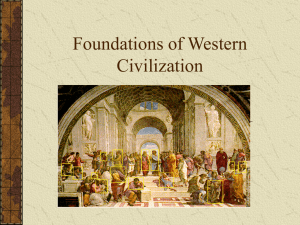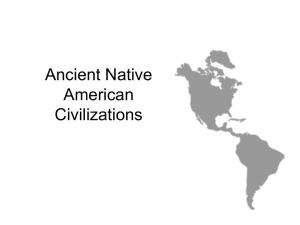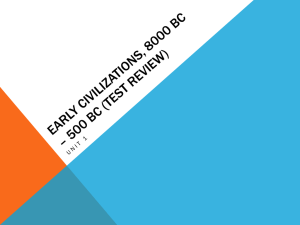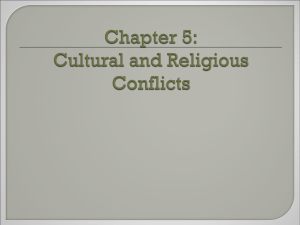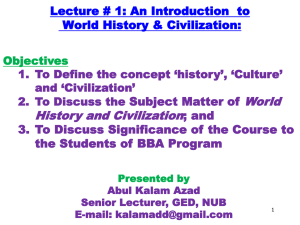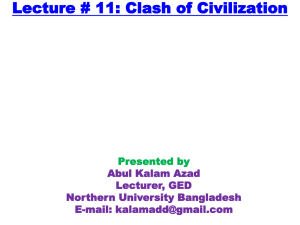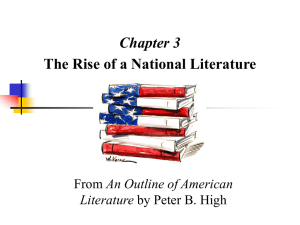ASA PowerPoint 2012 - Colonialism Through the Veil
advertisement
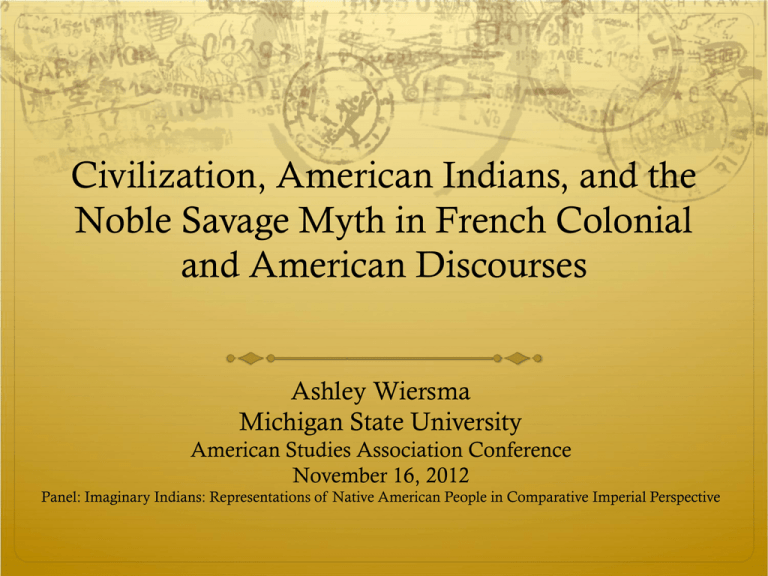
Civilization, American Indians, and the Noble Savage Myth in French Colonial and American Discourses Ashley Wiersma Michigan State University American Studies Association Conference November 16, 2012 Panel: Imaginary Indians: Representations of Native American People in Comparative Imperial Perspective “Spanish civilization crushed the Indian; English civilization scorned and neglected him; French civilization embraced and cherished him.” – Francis Parkman European “Civilization” Encounters the Sauvage “The Discovery of America.” Jan van der Straet (Stradanus), pen and bistre, ca. 1575. In Robert Berkhofer, Jr., The White Man’s Indian: Images of the American Indian from Columbus to the Present (New York: Vintage Books, 1979), image in insert between pages 138-139. French Discourse The Valois Victory in the Hundred Years’ War created a need for a unified French identity Painting of the last battle of the Hundred Years’ War: Battle of Castillon (1453), by the French painter CharlesPhilippe Larivière (1798– 1876). Development of an Idea: Civilisation By 1771, this word referred to a group of people who were: Sociable Civil (polite) Tractable (compliant & governable) Able to live in community with one another because they recognized their religious and moral obligations to God and others Who lived in an ordered society that was governed by laws and sovereign authority. Etymology of Civilisation and related concepts Civilisation Concept Map “Sauvage” (1771) “people who live by roaming the woods, without fixed homes, without police, and almost without religion; wild people. [This meaning] is employed extensively. The wild people or the sauvages of America are mostly cannibals. They live by hunting and fishing and from the bounty of the Earth.” Theodor de Bry Engraving Measures of Civilization Hygiene & Social Norms “They seldom cut their nails. They rarely wash meat before putting it in the pot. Their cabins are ordinarily very dirty. They eat lice. The women make water before any one and in a full gathering. … In [sum], they put no restraint on their actions, and follow simply the animals.” (Louis Hennepin, 1683) Measures of Civilization Politeness “The Indians trouble themselves very little with our civilities, on the contrary, they ridicule us when we practice them. … Their conversation whether among men or women is generally only indecency and ribaldry.” -- (Louis Hennepin, 1683) “Civilized” Indians “The first day after our departure we found the cabin of Rouensas, the most considerable of the Illinois chiefs. He is a very good Christian and received us politely, not like a barbarian, but like a well bred Frenchman; he took us to his cabin and forced us to spend the night there. He made us a present of three deer, one of which he gave to the Father, the other to Mr. de Tonty, and the third to us.” -- Father Buisson de St. Cosme Enlightenment Definition of Civilisation Expanded to include: Advancements in comfort Increased material possessions and personal luxuries Improved and expanded education Cultivation of the arts and sciences Expansion of commerce and industry [add images from NAISA conference – luxury, writing, etc.] Shaping American Discourses Influenced by William Robertson’s History of America (1777) “The inhabitants of the New World were in a state of society so extremely rude, as to be unacquainted with those arts which are the first essays of human ingenuity in its advance towards improvement. Even the most cultivated nations of America were strangers to many of those simple inventions, which were almost coeval with society in other parts of the world, and were known in the earliest periods of civil life.” -- Robertson, vol 1, p. 270. American Discourses William Robertson employed the French concepts of civilization and the progression of mankind through stages of development. Robertson’s work and these ideas shaped Thomas Jefferson and other Americans’ discourses in the early American republic. To be civilized was to be socially unified, exhibit social norms perceived to be necessary for civil life, exchange complete liberty for life in community with others and therefore to subject oneself to the rule of law. Early 19th Century American Representations of Indians George Catlin’s Wi-jún-jon, Pigeon’s Egg Head (The Light) Going To and Returning From Washington (1837-9) Cooper’s The Last of the Mohicans (1826) Noble Savage Myth Began in French discourse Analogy of human potential and the possibility to reform society and politics In the United States, the image became popular during and after the American Revolution It could only be adopted in regions of the United States in Americans perceived Indians to have disappeared Competing Tropes English colonial and American captivity narratives and tales of brutal Indian warfare. American settlers’ portrayals of “savage,” degenerate Indians unfit to occupy “American” territory French “noble savages” who exemplified the positive characteristics of “natural man” and revealed flaws in French society American “noble savages” – heroic but doomed and/or the unwitting accomplices to American colonization In each case, American Indians served to demonstrate the distance between white Euro-American culture and that of “primitive” peoples either to critique or praise and advance contemporary Euro-American civilization.
